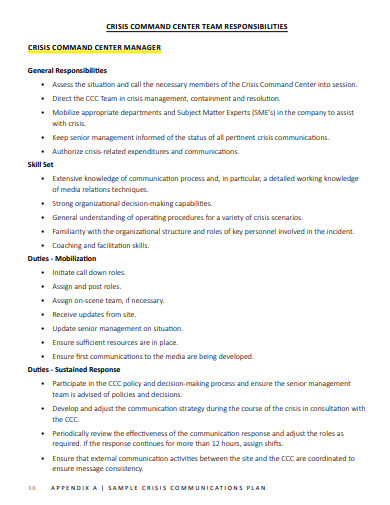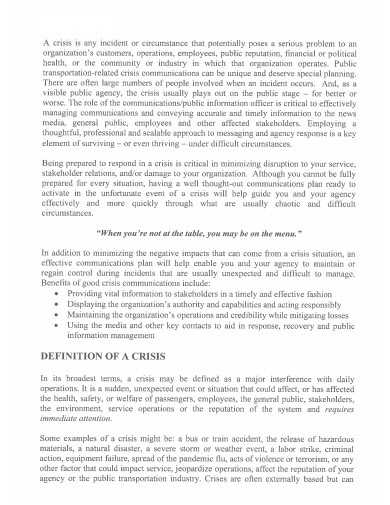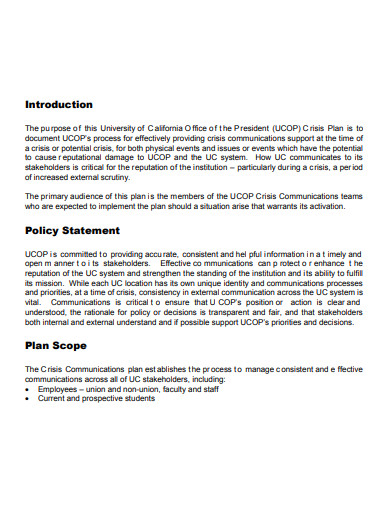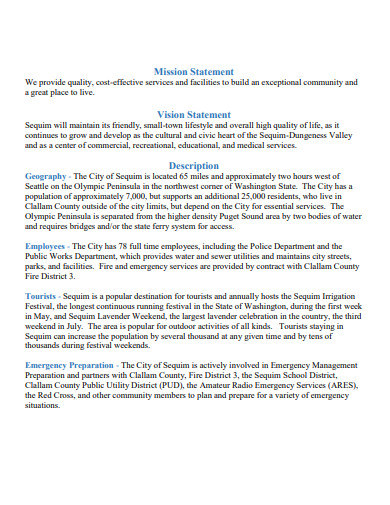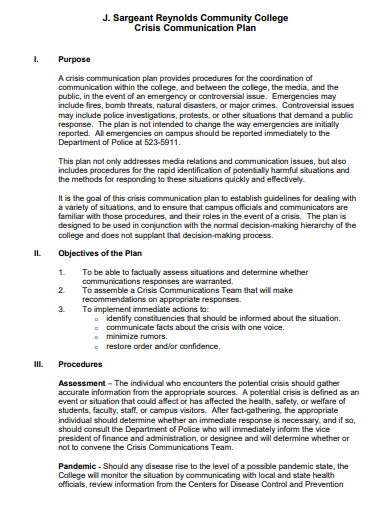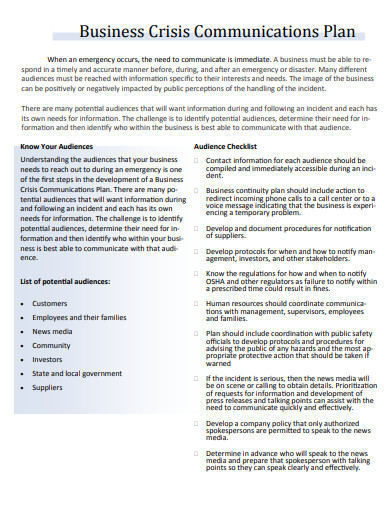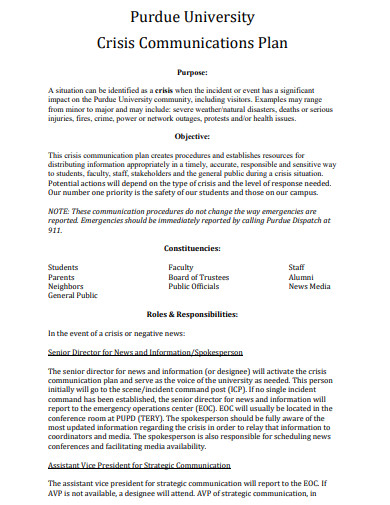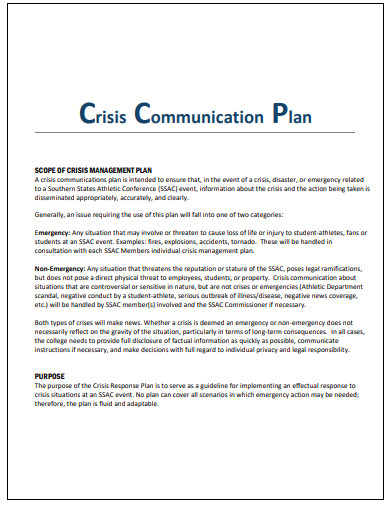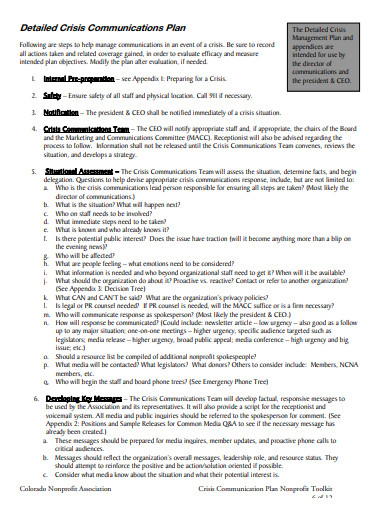10+ Crisis Communication Plan Examples to Download
Crises can occur at any time. Sometimes they do so without heralding themselves. Sometimes they just catch us off guard and leave us with dire aftermath. But regardless if there’s a prior warning or not, you should always prepare your business for a possible emergency situation. Otherwise, it might not be able to weather storms, and it could collapse, leaving you with a heavy financial loss. During a crisis, stakeholders of your business should be on the same page for it to survive. For that, you’ll need the guidance of our Crisis Communication Plan Examples. Feel free to view them below!
10+ Crisis Communication Plan Examples
1. Crisis Communication Plan Template
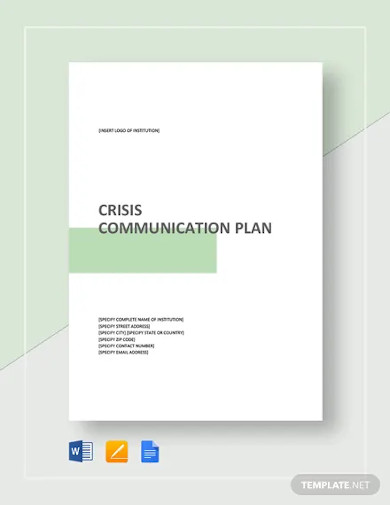
2. Sample Crisis Communication Plan
3. Crisis Communication Plan
4. Crisis Communications Plan Example
5. University Crisis Communication Plan
6. Basic Crisis Communication Plan
7. College Crisis Communication Plan
8. Business Crisis Communication Plan
9. Crisis Communication Plan for University
10. Crisis Communication Plan in PDF
11. Crisis Communication Plan for Non-Profit
What Is a Crisis Communication Plan?
A crisis communication plan is a document containing guidelines on how to communicate effectively during emergencies. This document shows detailed explanations on how to relay information swiftly and clearly, from start to finish. Without a crisis communication plan, your business will have an ineffective crisis response procedure. That’s because it’s an integral element in a crisis management plan. Communication is crucial in times of crisis.
Things that Should be in a Crisis Communication Plan
Your crisis communication checklist plan must have all the components it needs. If one’s lacking, it might fail to serve its purpose or not be as helpful as it should be. In that case, your emergency management will be suboptimal, which means your business could suffer significant damages, especially in terms of finances. So see to it to include these components in your crisis communication plan.
- List of crises scenarios for clear, targetted planning
- A flexible set of incident response plans
- A set of crisis communication training modules
- A clear chain of command within the organizational chart
- Detailed descriptions of the duties and responsibilities of every crisis management team member
- List of tools, materials, or channels for emergency communications
- Emergency simulation plans
- Contingency plans or backup plans
How to Formulate a Crisis Communication Plan
Now that you know what to put in a crisis communication plan, we’ll now show you how to make one. The steps below can help your business survive different types of crises, such as a pandemic, natural disaster, massive data loss, workplace accidents, etc.
Step 1: Identify All Stakeholders of the Business
It won’t be a communication plan if there’s no emphasis on who should be involved in it. Communication, after all, is the process of relaying information from one person to another. So make sure to identify all stakeholders of your business. They’re the people you need to communicate with during a crisis. They can help your business’s survival and recovery.
Step 2: Visualize the Scenario of Every Possible Emergency
In visualizing the possible scenarios, you can come up with the most strategic response procedures. To do this, you need to imagine how things could escalate in every potential crisis you’ve identified. That way, you can easily conceptualize a counteraction to mitigate their adverse effects and protect your business.
Step 3: Create Detailed Steps in Relaying Information
Your communication plan must have a step by step guide in relaying information. In other words, a standard protocol. With it, each stakeholder will have a better grasp on what they should do during an emergency. That helps them to respond efficiently and collectively despite the pressures of a crisis.
Step 4: Test the Crisis Communication Plan
According to PR News, around 62% of companies have prepared a crisis plan. But only a few of them test it, which is risky. It’s risky because the only way to know if a crisis plan works is to do a dry run of it. So make sure to do that once you’ve completed your communication plan. You can do this by conducting monthly or quarterly emergency drills. By testing your communication plan, you can detect holes in it that you need to improve. So, if a crisis happens, unfortunately, you’ll have a 100 percent solid communication plan. Each stakeholder can efficiently accomplish its role in keeping the business standing.
FAQs
What are the six phases of crisis management?
These are the six phases of crisis management:
- Prediction or warning
- Risk analysis and assessment
- Risk or crisis response
- Risk management or mitigation
- Resolution
- Recovery
Who should be included in a crisis management team?
The people who should be in your crisis management team are the stakeholders of your business. These stakeholders are the following:
- Employees
- Supervisors
- Department heads
- Executive management team
- Business partners
- Business investors
- Government agencies for public safety and security
What are the critical skills of crisis leadership?
Crises are serious situations that could mean the end of your business. These critical skills are what you must have to lead your business away from the dire outcomes of an incident or disaster:
- Excellent written and verbal communication ability
- Flexible or adaptable in any given situation
- Professional-level problem-solving or troubleshooting skills
- Can have a calm and collected mind during red alert situations
- A great team player
- Creative
- Assertive
You should always pursue business resiliency to keep your organization alive despite a crisis. One of the things that makes a business great is its capability to bounce back from dark times. Take note that every business will experience dark times, no matter how big of an empire it is. So to prepare your business, start devising your communication plan asap. Don’t forget to take advantage of our examples of a crisis communication plan. You can combine them with our disaster recovery plan sample.



